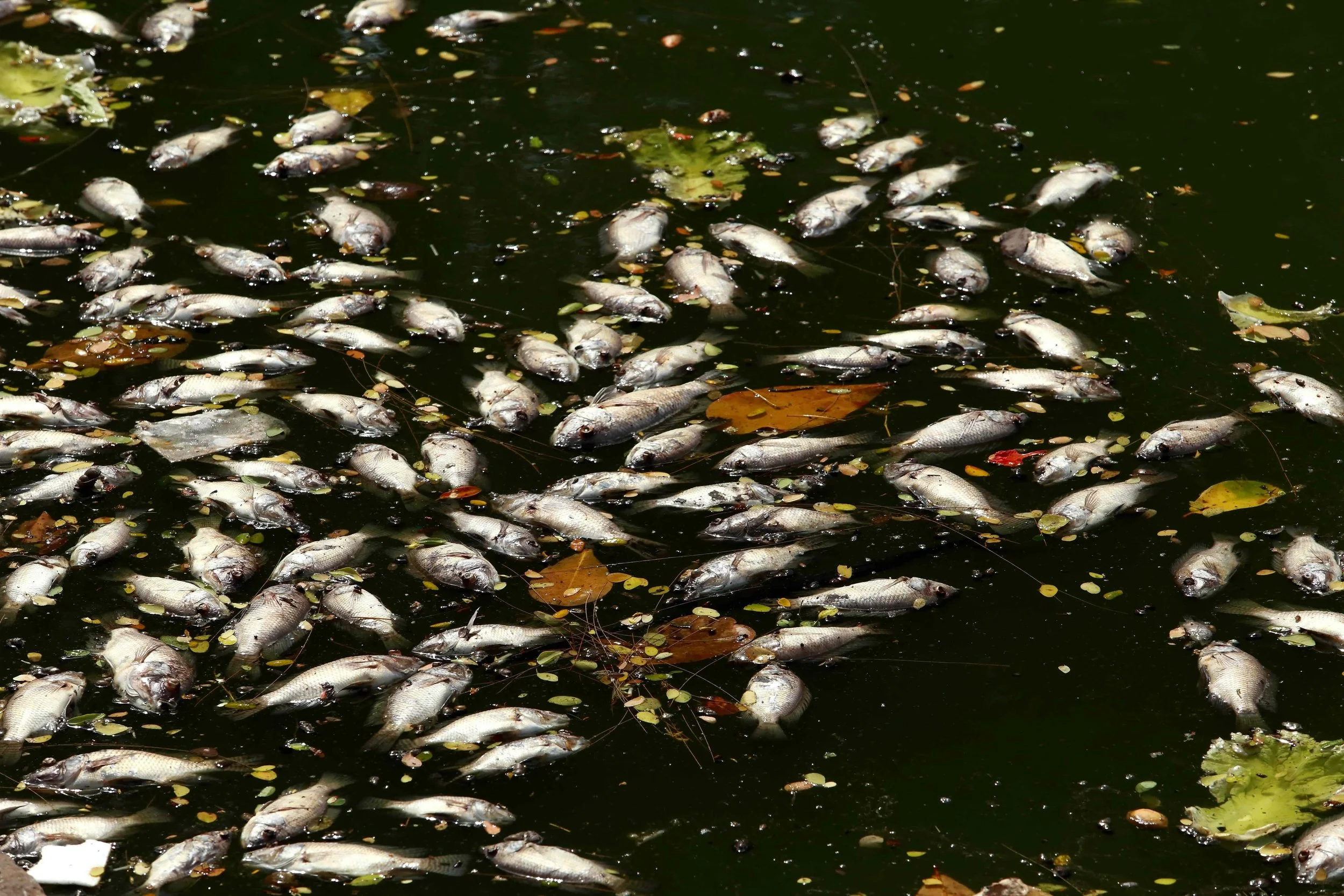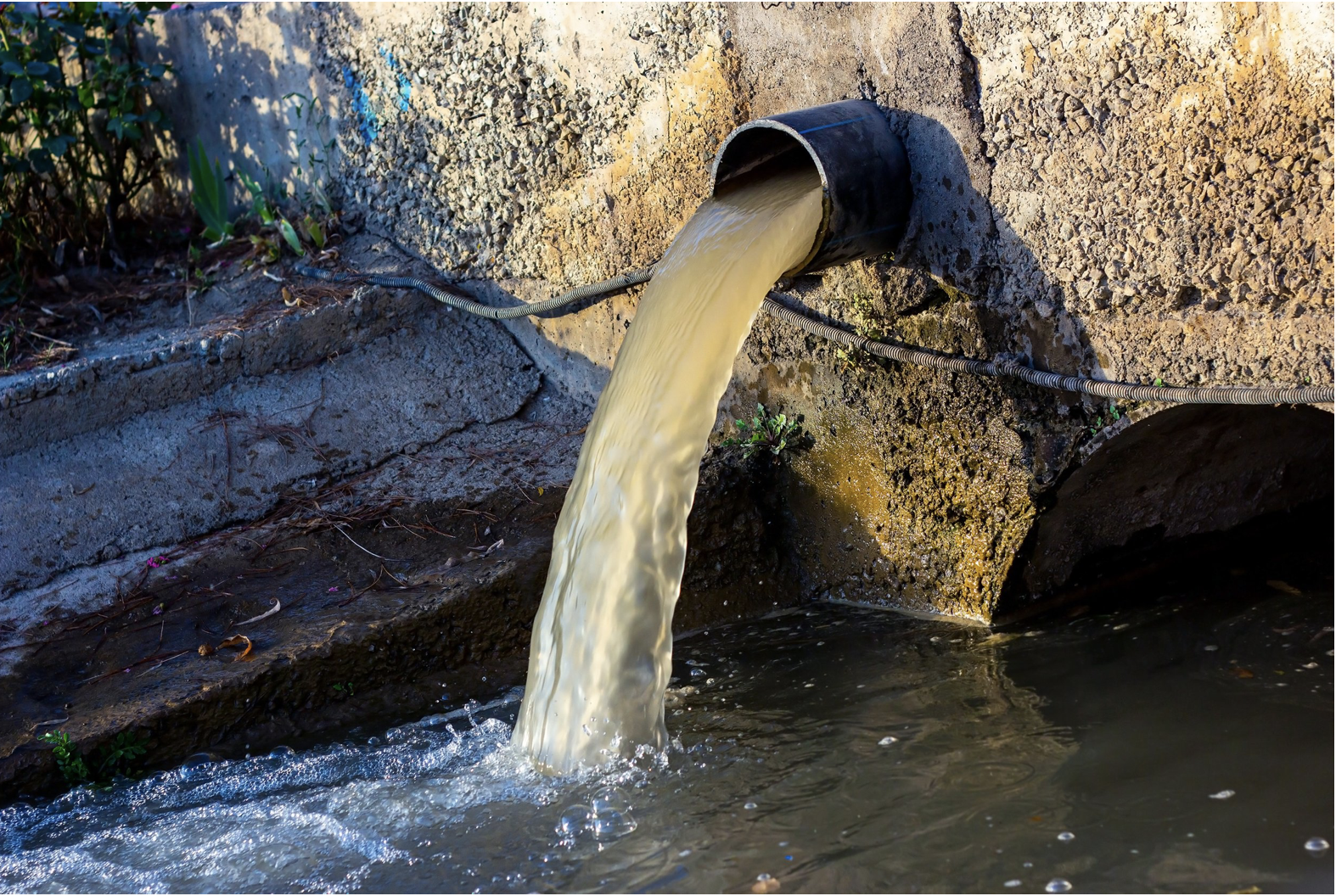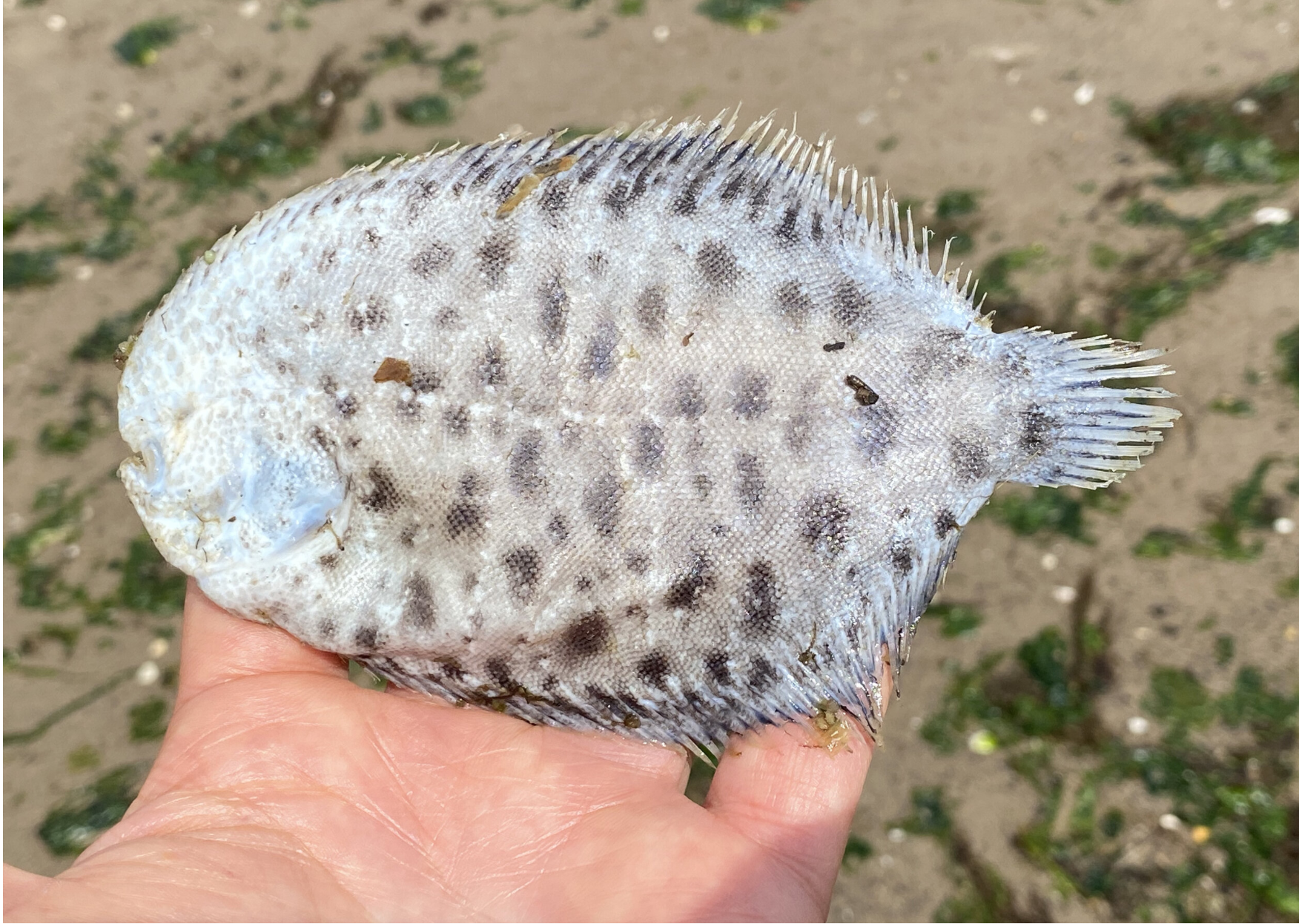WHY SO MANY DEAD FISH ON THE BEACH?
What to Do If You Find A Fish Kill in New Jersey?
An adult Summer flounder or fluke (Paralichthys dentatus) found dead in May 2025 along the Atlantic Ocean in Long Beach Island, NJ.
If a fish kill is observed it should be reported immediately to the 24/7 NJ DEP Hotline at
1-877-WARN-DEP (1-877-927-6337)
In order to successfully determine the cause of a fish kill it is important to arrive during the early stages, when freshly dead or dying fish are available for examination. There are several important observations to make when reporting a fish kill:
1) What is the approximate number of dead fish?
2) Is it only one species of fish that is dying or are there a number of different species affected?
3) Is there an unusual color or odor to the water?
4) Are there any other dead organisms (i.e. amphibians, reptiles, insects, or plant life) present?
Fish kills can be related to a number of causes including infectious diseases, toxic substances, or poor environmental conditions.
Fish kills most commonly occur in the spring and summer when water temperatures are rising and can quickly fluctuate between shallow and deeper waters within an estuary.
There are many reasons why fish wash up dead on a beach in great numbers.
Atlantic menhaden or bunker (Brevoortia tyrannus) found dead on a beach along Sandy Hook Bay in spring 2021
Sometimes it’s natural…
During the fall or spring, when large predatory fish, including striped bass and bluefish, are on the move and foraging for a fishy meal, they will at times force massive schools of bait fish into shallow waters or into tight balls in order to pick off and eat a prey fish along the edge. The small fish within a tightly confined pack area will become frightened, stressed and defecate. These actions will use up a good amount of dissolved oxygen within a water column during respiration. This will cause a “fish kill,” also known as a fish die-off, which is a localized die-off of fish populations.
Image obtained from TalkingFish.org from an article about “A Thanksgiving Fish Story.”
But many fish kills today are no longer natural, especially near large urban & suburban areas!
Early historical accounts illustrate that these fish die offs were used by native people and early European settlers as a way to enhance soil quality to grow crops such as corn. For example, Squanto or Tisquantum, a Patuxet person and a member of the Wampanoag tribal confederation who lived primarily around modern-day Plymouth, Massachusetts, and were among the first native people encountered by European settlers in the region in the early 17th century, showed English settlers how to plant a corn seed with the body of a dead fish, increasing the productivity of the crop in the sandy, clay and rocky northeastern soils. The fish was called munnawhateaug, meaning fertilizer. This Native American name has since developed into menhaden or called by some people as bunker.
Within the New York-New Jersey area, the first recorded large kill of menhaden on a beach was observed by a Dutch settler, Jasper Danckaerts, in a creek in Staten Island in 1679 (Waldman, 1999).
Dissolved oxygen refers to the level of free, non-bonded oxygen present in water or other liquids. Dissolved oxygen is an essential factor second only to water itself for the health of fish and other aquatic life. A dissolved oxygen level that is too high or too low can harm aquatic life and affect water quality.
Fish kills of bunker or menhaden often indicate a localized dissolved oxygen (DO) drop to at least 2.0 mg/l - a good level of DO is 5.0 mg/l.
The most common cause today of a large fish kill is reduced oxygen in the water, which in turn may be due to factors such as drought, excessive algae or brown/red tides, or a sustained increase in water temperature due to global warming. Infectious diseases, bacteria, and parasites can also lead to a large fish die off.
In addition, menhaden or bunker fish can die from the bacteria Vibrio and Photobacterium damselae, which cause respiratory disease in fish, but not humans.
Fish kills are often the first visible signs of environmental stress in a local body of water and should be investigated as a matter of urgency by state or federal environmental agencies to determine the cause of the kill. Many fish species have a relatively low tolerance of variations in environmental conditions, such as water temperature or low dissolved oxygen, and their death is often an indicator of a problem in their watery environment that may be affecting other organisms.
An Historical Account of Fish Kills along the Jersey Shore.
1950s to 1990s Fish Kills
In the 1950s and 1960s, while industrial manufacturing declined around the Northeast including in New Jersey & New York, a surge in postwar housing construction ushered in a population boom and suburban sprawl, especially along rivers and coastal areas. The first comprehensive study of water quality in Long Island Sound showed evidence of human impact affecting oxygen levels. Similar studies in the New York and New Jersey region found much the same with increasing fish kills, especially of menhaden due to poor water quality.
In the 1970s, low levels of dissolved oxygen contributed to large scale fish kills within tidal water or estuaries in New York and New Jersey, as well as estuarine waters in the United States. Concerns nationally about the health of America’s waterways caused passage of the 1972 federal Clean Water Act, which established the basic structure for regulating discharges of pollutants into the waters of the United States and regulating quality standards for surface waters. One of the goals of the Clean Water Act was to achieve “fishable and swimmable” waters by 1983.
In the 1980s, local studies in New York and New Jersey conducted by environmental organizations identified low levels of oxygen, later related to excess nitrogen pollution, as one of the greatest environmental threats to water quality.
2000 Fish Kill
The first modern large fish die off on record in the coastal waters of Monmouth County took place in 2000, when 3.9 million juvenile menhaden (peanut bunkers) suffocated in Little Silver Creek in the Shrewsbury estuary.
2007 Fish Kill
From mid June through early fall of 2007, a record level of 11 bunker kills occurred in the Bayshore and the Shrewsbury River area. Three (3) kills were estimated in the hundreds of thousand to million range. Newspaper pictures showed dead peanut bunker (juveniles) littering the phragmites area along Matawan Creek in Keyport, in spite of average water quality and normal dissolved oxygen levels. The only unusual condition that year was the water temperature had spiked to 75 degrees F by Memorial Day (as recorded at the USGS station at Keansburg), which had contributed to a significant diatom bloom in Sandy Hook Bay, the first to occur during the Memorial Day weekend in an least 10 years.
2008 Fish Kill
In 2008, bunker and other baitfish were predominately spotted by fisherman in the ocean south of Long Branch rather than in the Bay. There were only a few minor bunker kills in local estuaries that year, mostly linked to the bacteria Vibrio ordalii and Photobacterium damselae, which cause respiratory disease in fish, not humans (USFWS Fish Health Center, Lamar, Pennsylvania, 2008)
2016 Fish Kill
In 2016, there was a massive fish kill of menhaden or bunker due to mass asphyxiations, a process of being deprived of oxygen. According to an August 29, 2016 article in the Asbury Park Press:
There were four reported fish kills in New Jersey within seven days.
On Sunday, thousands of dead fish clustered around the boats in the Atlantic Highlands Marina
15,000 to 20,000 bunker were found dead in lagoons along Osborn Island near Little Egg Harbor on Saturday
News 12 reported on Friday that hundreds of fish washed up dead near the Keyport Marine Basin
Estimates climbed above 1 million dead in the largest fish kill of the series, a Tuesday event in the Waackaack Creek in Keansburg
It's not just in New Jersey either, an estimated 11,000 fish were found dead near Northport Bay in Long Island, N.Y, according to Newsday.
A February 2016 article in On the Water magazine described the results of similar fish kill in 2015. A collaborative study between the Department of Environmental Conservation (DEC), the Suffolk County Department of Health Services (SCDHS) and researchers at Stony Brook and Cornell Universities had identified the multiple causes of three separate fish kills in the Peconic River in summer 2015, the DEC and SCDHS announced.
The study found that rising water temperatures and a spike in algal blooms fueled by increased levels of nitrogen caused low levels of dissolved oxygen in the river, which is ultimately believed to have caused mass asphyxiation among the menhaden population. Several additional factors also contributed to the kills, including a large population of predatory fish blocking the mouth of the river, essentially trapping the menhaden, and the presence of a virus among the fish.
2020-2021 Fish Kill
September 2020 there were numerous reports of dead menhaden fish washing ashore or floating in waterways, including in Raritan Bay, Sandy Hook Bay, and the Navesink and Shrewsbury rivers. Similar fish kills were reported in other states including New York, Connecticut and Rhode Island.
Dead fish began showing up in large numbers in November and December 2020, two colder months that don’t usually fit a normal fishkill pattern, and the fish were seen “spinning” in the water before dying. Sightings increased dramatically in April 2021.
An April 27, 2021 report from the NJ Division of Fish & Wildlife indicated that the massive fish kills were from a bacterium and its likely source was Vibrio anguillarum, one of the numerous Vibrio species that commonly occur in marine and estuarine environments.
In response to the widespread deaths of fish, the New Jersey Division of Fish and Wildlife released a Frequently Asked Questions guide for state residents.
Some Key Take Aways From The Q&A Guide:
Tests by the NJ Division of Fish and Wildlife indicate that the bacterium causing these mortalities is Vibrio anguillarum, one of numerous Vibrio species that commonly occur in marine and estuarine environments.
This bacterium is generally not known to be harmful to humans. However, contact with water in areas where fish die-offs are occurring should be avoided as a precaution. Handling of dead or unhealthy appearing fish should be avoided, including collecting for bait. If handling is necessary for disposal purposes, wear appropriate protection, including gloves.
In the short term, it is recommended that bathers avoid swimming, surfing, etc. in areas of active fish kills. Anyone entering the water in an affected area should wash exposed skin and clothing thoroughly with soap and water after contact with the water.
Bunker appear to be the only species impacted at this time and it is believed that they may be more susceptible to the impacts of this bacterium. This is likely driven by stressors present during the spring, including fluctuating water temperatures which may suppress the fish's immune system combined with the abundance and dense schooling nature of these fish, which enhances transmission of the bacterium.
NJ DEP is continuing with research to characterize this bacterium and the disease it is causing in the bunker. Histopathology and microbiological testing demonstrated that this bacterium is causing a systemic infection impacting multiple organs of the fish, including the brain. Bacterial infection of the brain and its associated damage is most likely causing the neurologic signs observed in the fish. These neurologic signs can be seen as fish circling at the surface, swimming erratically or uncontrolled, and sometimes lethargic and unresponsive to stimuli.
V. anguillarum is a common bacterium found in marine environments and outbreaks with the disease can be the result of other factors that may stress or compromise the immune system of the fish. In the spring and fall when these mortalities occur, fluctuating water temperatures may play a role in making fish more vulnerable to infection. The abundance and dense-schooling nature of bunker also enhance the transmission of the bacterium.
Dirty water causes a tremendous amount of stress to fish, crabs, clams, oysters and other aquatic life.
Fish kills are often caused by excessive nitrogen and phosphorous pollution from human activities, including:
Urban/suburban runoff from developed areas that washes nutrients from fertilizers, septic systems, and other pollutants into local waterways that flow into coastal and estuarine waters.
Wastewater treatment plants that illegally release water—often still containing large amounts of nutrients, especially during a rain event—into streams and rivers across a watershed that flow into coastal waters.
Air pollution from our cars, factories, gas-powered tools, and power plants that contribute nearly 30 percent of the total nitrogen pollution to waterways.
Dirty, polluted and often toxic water still enter our local waterways, especially after it rains or when snow melts. Combined Sewer overflows also still exist around New York and New Jersey. A combined sewer overflow (CSO) happens when a combined sewer system is overwhelmed by stormwater and discharges untreated raw sewage directly into nearby waterways.
The Vibrio bacteria causing the 2020-2021 fish kill of menhaden has historically been linked to nutrient pollution from sewage, septic, and storm water runoff. It is also linked to shifting, rising or warmer waters, which is now associated with global climate change.
The Vibrio bacteria can cause illness in humans, so there is the potential or a certain degree of risk that anyone swimming in the water might get sick, especially if a person has an open wound, cut or scape on the skin. According to the CDC - Vibriosis causes an estimated 80,000 illnesses and 100 deaths in the United States every year. People with vibriosis become infected by consuming raw or undercooked seafood or exposing a wound to seawater.
It is advised to always avoid eating any fish that shows obvious disease signs and to cook your fish thoroughly before consumption.
Menhaden fish are a key link in a coastal aquatic food chain. If these fish get sick or die off it could be a "canary in a coal mine" to suggest that other marine species like other species of fish, or crabs, clams and other shellfish might be impacted by this pathogenic. Could important recreational species of fish including bluefish, striped bass, flounder (both winter and summer or fluke), or other species become sick from the same or a similar pathogenic from stresses from a changing global climate and rising or shifting water temperatures?
An adult hogchocker (Trinectes maculatus), a small flatfish, along with dozens of other small or juvenile fish, including puffer or blow fish, were found washed up dead on a beach along Raritan Bay in May 2021.
From the standpoint of Save Coastal Wildlife
Fish kills are evidence of a serious problem in a waterway. Any loss of fish, whether natural or other causes, may be a warning sign of an impending or a worsening environmental problem.
A plan should be in place by New Jersey State government officials to make sure water quality improves and fish die off events decrease in time and size. One of major contributor to a fish kill is dirty water from point-source pollution such as from a damaged sewage treatment plant or broken sewage pipes.
A more widespread issue is dirty water from Nonpoint Source (NPS) pollution. NPS does not originate from regulated point sources like a factory or a smokestack. NPS comes from many different sources all related to the actions of people, which is why nonpoint source pollution is often referred to as people pollution. NPS pollution occurs when rainfall flows off the land, roads, buildings, and other features of a landscape. This runoff carries pollutants (including excess nitrogen and phosphorous) into lakes, rivers, wetlands, bays, and aquifers, to essentially foul water quality downstream within the watershed or drainage area.










